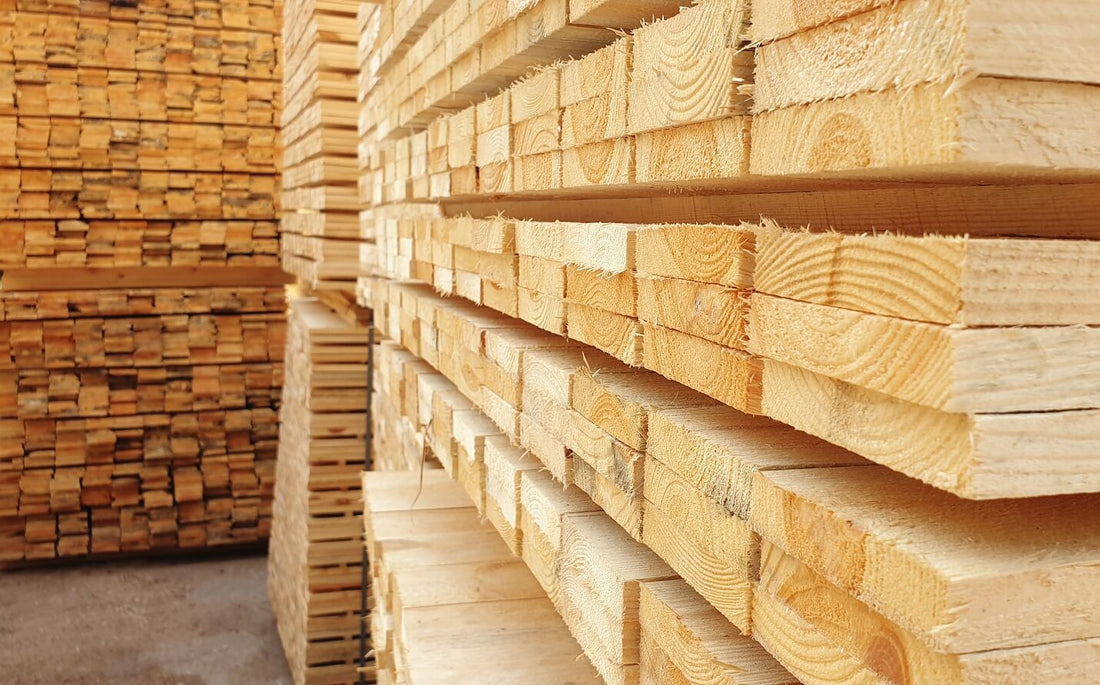Resawing is essential when you’re trying to break down wood into pieces that are easier for you to handle. However, knowing how to go about this process isn’t always easy. For example, there are so many bandsaw options out there – which should you be utilizing?
In this blade guide, we review the different bandsaw blade options that you might consider trying. We aim to explain which are ideal for which purposes and which are likely to be the most suited to your needs.
It can be tough to start the resawing process when you don’t know what you’re doing, but have no fear – that’s where we come in!
Different Types of Bandsaw Blades
There are many types of bandsaw blades that you might consider using, and we understand how overwhelming it can be to choose from all of the different kinds there are on the market.
Let’s get into some common types you might run into and discuss what sets them apart.
Regular-Toothed Blades
These are the most common type of bandsaw blade – you might’ve guessed that, as their name is a dead giveaway. This blade type is ideal for metal and wood, though it works best with thin materials. It comes with deep gullets and evenly-spaced teeth. It’s basically an ideal blade for general-purpose recutting.
Hook-Toothed Blades
Hook-toothed blades come with slightly curved teeth, as their name implies. These teeth are spaced more widely than their regular-toothed counterparts and have more profound gaps between them.
This makes them ideal for cutting materials that produce a wide amount of dust and debris when sawed. This type of blade is great for making fast cuts that are long and deep, though the resulting cut might be a bit rougher than you’d get with a regular-toothed blade.
Skip-Toothed Blades
The third kind of saw blade you’ll likely run into is a skip-toothed blade. These also have wide gullets like the hook-toothed variety, but the difference is that these spaces are shallower. The teeth are, therefore, widely-spaced, but there isn’t as much depth between them.
This kind of blade is a good pick for trying to get your chips out as easily as possible. Trying to reduce clogging and get the job done as fast as possible? Then a skip-tooth blade is probably the way that you’re going to want to go.

Our Pick Between These
We recommend going with a hook-toothed blade with a TPI of 3-4. In case you’re unfamiliar, TPI refers to teeth-per-inch – the measurement used to determine how widely spaced a saw blade is.
The wider the spacing between the teeth, the rougher the cuts come out, and with resawing you’re typically going for clean, smooth cuts that will deliver you nice strips of wood that you can put to quality use in carpentry and other DIY projects.
You’ll want to utilize a bandsaw blade designed explicitly for resawing. Otherwise, you’ll run the risk of a shoddy finished project that just isn’t delivering as much as you would like it to.
General Tips to Keep in Mind
Go with a wide saw blade for best results when resawing. If you’re using a 14” bandsaw, then you can generally go with a blade that is ½” to ¾”. However, we would suggest that you go with the widest blade possible when resawing, as generally speaking, you will want a blade that can deliver the smoothest cut possible.
If you have the luxury available, it might be a good idea to set aside a blade that you only use for resawing. This is because when working with wood you’re trying to preserve, you will want to use a blade that you know is sharp and devoid of any warping that might have come from overuse.
While you can use the same old blade for general sawing, resawing requires more precise cuts. Keeping your resawing blade clean with a commercial cleaner is also a good idea.
However, if you’re a DIY-lover and you want to keep your products in-house, as it were, then you can make your own cleaning solution to utilize.
Either way, make sure to keep your resawing blade in good shape. You can scrub it with a rag or an old toothbrush – as long as it shines.

Another tip to remember is to ensure your bandsaw is correctly calibrated and set up for the resawing experience. Once your blade is set to your preferred specifications, then you can get started on ensuring your bandsaw is ready to go.
You’ll want to adjust the guide post, ensure the guides are set where they need to be, and correctly ascertain your blade tension. You might also want to use a handheld planer to ensure that your initial bearing surface is set up properly. A simple handheld tool like a planer can make a big difference in ensuring your work turns out well.
Resaw Like the Pro You Are
While this guide for the best bandsaw blade likely isn’t going to make you an expert woodworker in one read, we hope that you were able to glean some valuable tips.
The resawing process is easy to mess up, but ensuring you have the right equipment is one of the most important parts of getting a good result. We hope that whatever lumber you are working with turns out well – good luck with your next bit of woodworking project!

